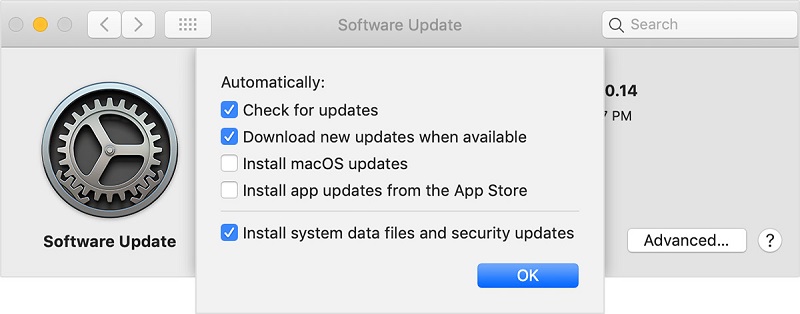On Mac, the WindowServer process plays a crucial role in managing the graphical interface of macOS. While it's an essential process for the functioning of macOS, it can sometimes consume a significant amount of CPU power, leading to slow performance and higher fan speeds. If you're experiencing lag, overheating, or sluggish performance, it's important to tackle the WindowServer problem early.
In this guide, we'll walk you through how to address high CPU usage of WindowServer on Mac, and share a bonus tip for cleaning and optimizing your Mac with the best tools available. With a few troubleshooting steps, you can reduce the load on your Mac’s processor and improve overall performance.
Contents: Part 1. What Is Windowserver? Part 2. How to Fix Windowserver High CPU Usage on Mac? Part 3. Bonus Tip: The Best Mac Cleaner to Free SpacePart 4. Conclusion
Part 1. What Is Windowserver?
The WindowServer on Mac is what makes it possible for programs and displays to communicate with one another. It is responsible for rendering windows, icons, animations, and visual elements on the screen. Whenever you move or resize windows, open applications, or switch between them, WindowServer is actively working behind the scenes to update the display.
However, WindowServer can sometimes consume more CPU than necessary. When this happens, your Mac may slow down, overheat, or become less responsive. This high CPU usage is often due to issues like having too many open windows, running resource-heavy apps, or outdated system configurations.
Part 2. How to Fix Windowserver High CPU Usage on Mac?
High CPU consumption is generally typical, but it may sometimes be alarming. Your Mac might regularly lag as a result of this increased consumption. High CPU use might also make it challenging for the device to complete even the most straightforward activities. Your WindowServer on Mac should ideally use no over than 30% of your CPU power. If you notice WindowServer using excessive CPU resources, here are several strategies to fix the issue:
1. Close Unnecessary Windows
How to reduce CPU usage of WindowServer on Mac? Too many open windows can strain your Mac's resources. WindowServer has to manage the content of every window, which can lead to high CPU usage. Try closing windows or tabs that you're not actively using.
2. Disable Transparency and Motion
Some of macOS’s visual effects can put a load on the system. Reducing transparency and motion effects can help. The steps are as follows:
- In the upper left corner of your device's screen, select the "Apple Logo."
- Select "System Preferences."
- On the "Accessibility" icon, click twice.
- Go to the left panel and choose "Display."
- Ensure that "Reduce Transparency" as well as "Reduce Motion" are checked.

3. Switch to a Single Display
How to reduce CPU usage of WindowServer on Mac? If you’re using multiple monitors, try switching to just one. Running more than one display increases the graphical workload for WindowServer, causing it to use more CPU. Try disconnecting any secondary monitors and check if that reduces CPU usage.
4. Update macOS and Applications
Outdated software may have bugs or inefficiencies that increase CPU usage. Keeping your macOS and apps up-to-date ensures you have the latest fixes and performance improvements. Take the following actions:
- On your screen, in the top left corner, click the Apple logo.
- Select "System Preferences" from the menu.
- Then click "Software Update."
- If an update is accessible, select the "Update Now" button.

5. Reduce Desktop Clutter
A cluttered desktop with many icons can increase WindowServer’s load. Try organizing your desktop by grouping items into folders or moving them to other locations.
6. Check for Resource-Heavy Apps
Some applications, especially those with intensive graphical content (like photo or video editing software), can put extra load on WindowServer. Open Activity Monitor to check which apps are consuming a lot of resources. Try quitting those apps or replacing them with more lightweight alternatives.
7. Reset PRAM and SMC
How to reduce CPU usage of WindowServer on Mac? Sometimes, resetting the PRAM (Parameter RAM) and SMC (System Management Controller) can help resolve display and performance issues.
Part 3. Bonus Tip: The Best Mac Cleaner to Free Space
How to fix the high CPU and memory usage of WindowServer on Mac? One effective way to optimize your Mac and reduce system load is by clearing out unnecessary files and freeing up storage space. iMyMac PowerMyMac is an excellent tool for this task. It scans your Mac for junk files, caches, and other system clutter that might be slowing down your Mac.
Using PowerMyMac is the simplest method to ensure that your Mac is operating at its maximum potential. The Junk Cleaner module of this software and the App Uninstaller module of this app may transform your Mac from being sluggish to being ready for a race in a matter of seconds. These modules give you a choice to clear up RAM, fix disk permissions, remove unnecessary applications, and more. During this process, PowerMyMac would scan your computer for any malicious software that may have affected your Mac, as well as erase any unnecessary files that it found.

Part 4. Conclusion
High CPU usage by WindowServer can be frustrating, but with the right approach, you can optimize your system and get your Mac back to full performance. By closing unnecessary windows, adjusting visual effects, managing your displays, and using tools like iMyMac PowerMyMac to clean up your system, you can reduce the load on WindowServer on Mac and improve overall performance. Regular maintenance and updates are key to keeping your Mac running efficiently.
Feel free to explore each of the methods mentioned above to find what works best for your Mac!



